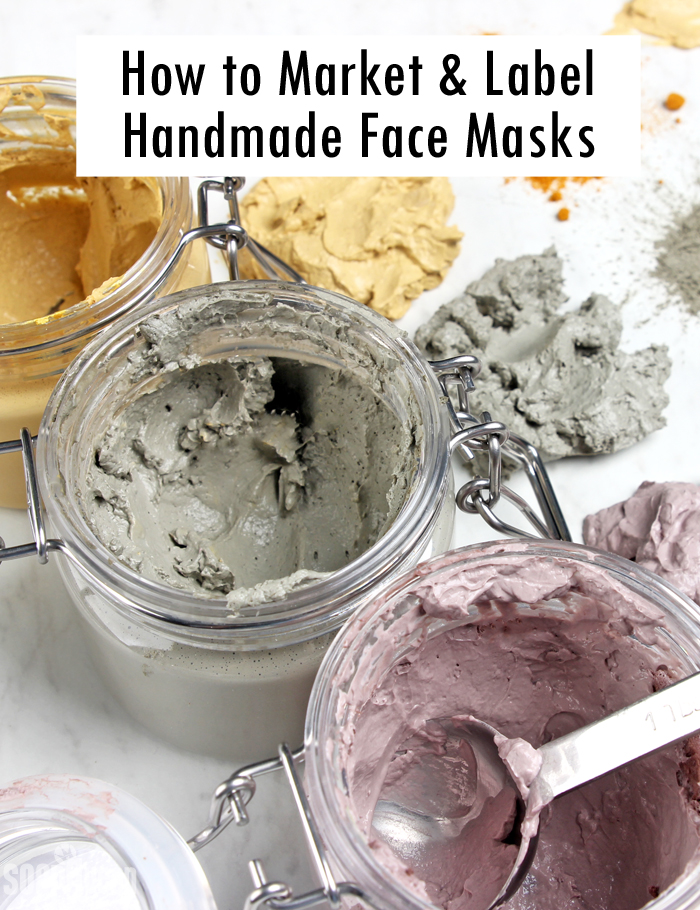
Thinking about creating and selling your own skin care products? Our clay mask recipes (Lavender, Sea Clay and Turmeric) are a great place to start. Don’t let the list of ingredients intimidate you, they are easy to make. Because the recipe has such a large water content, they can be quite cost effective to sell. When selling skin care, there are some important things to keep in mind, including labeling and claiming what the product can do.
Mask Cosmetic Claims vs. Medical Claims
Depending on what claims you make, the product is classified as a drug, cosmetic or soap by the FDA. If your product claims to treat or heal the body in any way, it is considered a drug and requires additional testing. For your product to be considered a cosmetic, it can only claim to beautify, promote attractiveness or alter ones appearance. The clay masks are considered a cosmetic by the FDA. But, if you make a claim that the masks cure, treat or heal the skin, they are considered a drug. Learn more about medical vs. drug claims here.
So, if you’re planning on adding a clay mask to your line…what can you say? Acceptable claims include saying the masks are moisturizing, conditioning, calming, skin-loving, beautifying, mattifying, or hydrating. You cannot advertise the masks as intended for certain skin conditions. For example, calling the mask a “Sea Clay Mask for Acne,” implies that it is intended to cure acne. Even if it has beneficial properties for acne-prone skin, the product was not tested to treat the skin by the FDA.
Medical and cosmetic claims can be a little confusing and frustrating. I’m sure you have seen plenty of people selling their products by making medical claims. Every small business owner must make the decision for themselves to adhere to the rules of the FDA or not. I always recommend to err on the side of caution to protect you and your business. It’s not worth the risk!
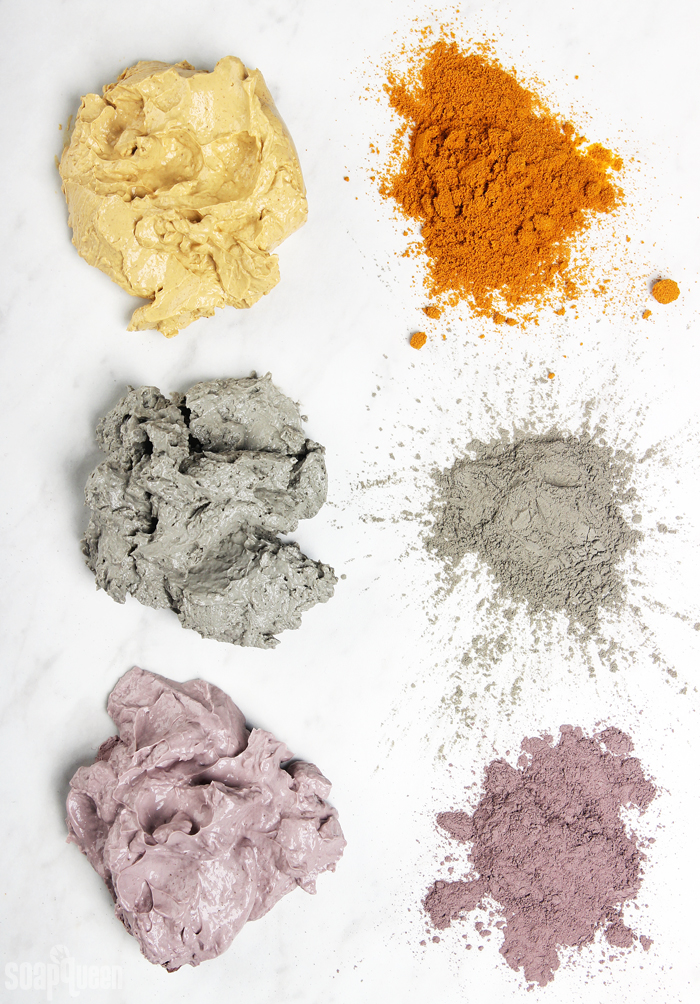
Labeling the Masks
Now, let’s talk labeling. For each recipe, we included free downloadable labels that can be printed on label paper and applied to the jars. These labels are great for gifting to friends or for personal use. But if you’re selling the masks, they need to be properly labeled with ingredients. To properly label your products, there are several rules to adhere to; click here to see the complete labeling guide by the FDA. It’s not the most interesting subject matter, but reviewing labeling rules and regulations is a must for small business owners.
Let’s take a look at the recipe for the Lavender Clay Mask, and go over how to properly label this product. The ingredients need to be listed in order of prominence in the recipe. The list of ingredients need to include the common name for the ingredient. Including the INCI name in parentheses is not required, but can be helpful for your customers. Learn more about INCI names and labeling here.
Lavender Clay Mask Recipe
21.4 oz. Distilled Water
1 oz. Argan Oil
1.3 oz. Avocado Oil
1 oz. Polawax Emulsifying Wax
0.8 oz. BTMS-50 Conditioning Wax
3.5 oz. Kaolin Clay
1 oz. Purple Brazilian Clay
2 mL Lavender 40/42 Essential Oil
0.5 oz. Evening Primrose Extract
0.2 oz. Optiphen
The ingredient list would look like this:
Water (Aqua), Kaolin Clay (Kaolinite), Avocado Oil (Persea Gratissima), Argan Oil (Argania Spinosa), Magnesium Aluminum Silicate, Montmorillonite, Kaolin, Mica, Emulsifying Wax NF, Behentrimonium Methosulfate, Cetyl Alcohol, Butylene Glycol, Fractionated Coconut Oil (Caprylic/Capric Triglyceride) Evening Primrose Oil (Oenothera Biennis Flower Extract), Phenoxyethanol, Caprylyl Glycol, Lavender Essential Oil (Lavandula Angustifolia)
The first few ingredients are straightforward. Water, kaolin clay, avocado oil and argan oil are listed along with their INCI names in parentheses. Including the INCI name in parentheses is optional. Then, we get to purple Brazilian clay, which is made up of several ingredients. The ingredients within the purple Brazilian Clay are listed, separated by commas.
Moving right along, we get to the Polawax Emulsifying Wax, which is a brand name and is protected by trade secret laws. The official INCI for that is “Emulsifying Wax NF.” BTMS-50 is made up of different ingredients, so the individual ingredients are listed. The same goes for the evening primrose extract and Optiphen. Lavender 40/42 essential oil does not contain multiple ingredients, so the INCI name goes into the parentheses.
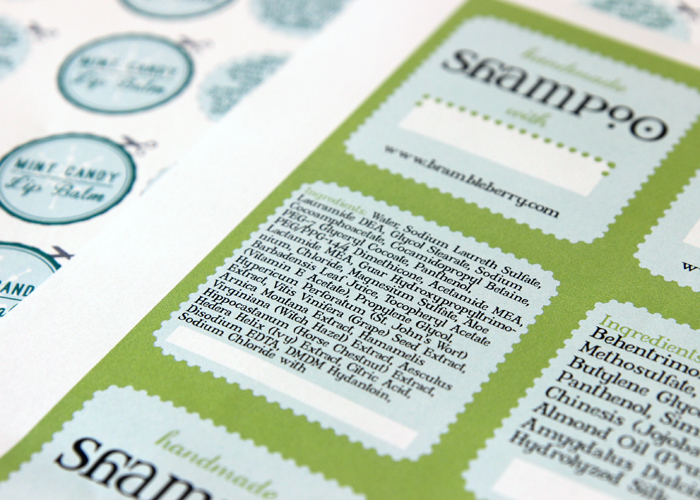
All the ingredients can look intimidating to a customer. So it’s important to educate yourself about the ingredients in your products to address any questions or concerns. Choosing to not properly label the product in order to make it look “safer” or more appealing is not the answer. Being able to address the importance of preservatives (“This product would grow mold without it!”) or the importance of an emulsifier (“That’s what binds together the water and skin-loving oils”) gives your customers the ability to make informed decisions about the products they buy. It will also build trust in you as a maker, and in your company.
If you’re looking for more labeling information and resources, check out the blog posts below. In addition, take the time to thoroughly read the Cosmetic Labeling Guide. If you find it overwhelming and boring (I hear you!), take it piece by piece and read small sections everyday. Marie Gale is also a fantastic resource on labeling; I highly recommend perusing her blog and investing in her book, Soap and Cosmetic Labeling.
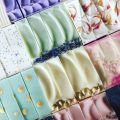

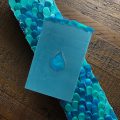
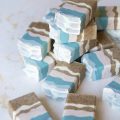

This is amazing. I just found all of your masks on Pinterest and I cannot wait to make them! Beautiful photography, too!
I see brands like Shea Moisture, and Lush describing their products that look like medical claims to me. Are they medical claims? Are they FDA Approved? I was not able to find any info about these brands being FDA Approved. I’m just wondering.
I’m not 100% sure. You will probably want to ask those brands to know for sure.
Hello!
Just to be sure, marketing a specific skin mask for a certain skin type, if it hasn’t been evaluated by the FDA, is the one we “shouldn’t” do correct? (Such as a herbal skin mask specifically for oily skin) Or is it safe to add which skin type would benefit the most from the mask?
You can say what skin type the mask is intended for. You’ll just want to avoid saying that it will cure acne, decrease wrinkles, etc. We recommend sticking with terms like oily, dry, combination, and sensitive skin. If you say “acne-prone skin,” the user may think it will cure their acne.
Hello. Please do you know about saliylic acid? Saw this in my local market was told its used for preservative. If true, can it be used for body butter cream with an alovera gel in it and in other beauty products I make.
Salicylic acid is commonly used as a chemical exfoliant, and is particularly popular in acne skin products. It’s used as a food preservative, but we do not recommend it for a preservative for bath and beauty products. Simply put, it is not a strong enough preservative for cosmetic products, which need to last longer than food and may be stored differently. It also needs to be in a very specific pH to be effective. I’ve included a few posts below with preservatives we recommend.
Talk it Out Tuesday: Preservatives:
https://www.soapqueen.com/bath-and-body-tutorials/lotion/talk-it-out-tuesday-preservatives/
Perfectly Preserved: https://www.soapqueen.com/bath-and-body-tutorials/tips-and-tricks/perfectly-preserved/
Hello, I’m making homemade peel of mask which contains apple cider vinegar and yogurt, which works well with me and my friends gave me good feedback. Now i’m planning start to make small business from it. I just want a simple nature preservative to add in it,
is there anything you can suggest?
iv been doing so much research and reading but still not sure what to use.
Thank you
We haven’t found a natural preservative that works well for us. You can use Optiphen at 1% of the total weight of the recipe. It’s paraben and formaldehyde free: https://www.brambleberry.com/Optiphen-P3682.aspx
Even with a preservative, the mask will go bad in a few weeks. Preservatives protect against mold and bacteria but they don’t extend the shelf life of the yogurt. You may want to advise people to store the mask in the fridge in between uses.
I really find your blog useful! Thank you so much for all the information 🙂
I just wanted to ask about packaging diy products like body scrubs. Is it better to keep them in a glass jar, a PET jar, or can a matte/ aluminum ziploc pouch do (like the ones I see from Bloke Body)? Which kind of packaging can retain the quality better if it’s just homemade? Been wanting to try selling them or giving them to friends. The coffee and sugar scrubs I’ve been making are usually made with coconut oil.
Any packaging that’s airtight will work. The most important thing is to keep scrubs in a cool, dry place so they last longer. Learn more about storing products here: http://www.soapqueen.com/bath-and-body-tutorials/tips-and-tricks/how-to-store-handmade-bath-products/
So when you break down an ingredient to list such as the purple Brazilian clay, you don’t need to say the main compound ingredient? Such as in food it would be something like Purple Brazilian Clay (Magnesium Aluminum Silicate, Montmorillonite, Kaolin, Mica),…
Could you please show in the FDA regulations where you can do what you are saying? I just want to have a reference to go back to. I couldn’t find anything about multi-component ingredients in cosmetics on the FDA site, and this is much needed info! Because Mica probably would be at the end of all the ingredients if Mica was taken by itself.
Thank you!
I believe you don’t have to list the main ingredient as long as the components are listed, but it doesn’t hurt to include it anyway. That makes it easier for customers to understand.
You can find the information on the FDA’s website here: https://www.fda.gov/Cosmetics/Labeling/default.htm
Their website can be tricky to navigate, so we also recommend the Soap and Cosmetic Labeling book. It breaks the laws down in an easy-to-understand way: https://www.brambleberry.com/Soap-And-Cosmetic-Labeling-Book-1-Book-P3663.aspx
Hey, I am making clay mask with oils only, do I NEED to add a preservative. Also, Body Butter (containing NO water) does not need a preservative, what if I add some pearl powder to it, does it need a preservative?
I learned soooo much from your site, thank you so much!!!
If your recipe doesn’t contain water and will be stored in a dry place with little to no contact with water, you don’t need a preservative. If you want to be extra careful or you plan on selling it, you can add Optiphen or Phenonip at 1%.
Learn more about preservatives here: http://www.soapqueen.com/bath-and-body-tutorials/lotion/talk-it-out-tuesday-preservatives/
Hello, I’m starting to make some products
starting with masks and scrubs
I just want a simple nature preservative to add in
Is there anything you can suggest?
iv been doing so much reading and not sure what to go for
Thank you
Alexandra
We haven’t found a natural preservative that protects against mold and bacteria. We recommend using something like Optiphen or Phenonip, which are very effective.
Learn more in this post: http://www.soapqueen.com/bath-and-body-tutorials/lotion/talk-it-out-tuesday-preservatives/
If ever I will just use Bentonite Clay, Unfiltered Apple Cider, Coconut oil, lavender oil and Optiphen, will it be still a good? Also, if I have added Optiphen, how long the mixed product will last?
The apple cider will go bad after a few weeks, which will shorten the shelf life even with a preservative. Preservatives protect against mold and bacteria, but they don’t extend the shelf life of the cider. You can mix the clay and oils together, pour some in a jar, and add apple cider before each use. That will help extend the shelf life.
Would it make sense to list these masks as “all natural” or would the addition of a preservative prohibit that? Love your site by the way!
The preservative and emulsifier are synthetic ingredients, so the masks aren’t necessarily all natural. However, you can say “made with natural ingredients” like the oils or clay. Learn more about the term “natural” here: http://www.soapqueen.com/bath-and-body-tutorials/tips-and-tricks/natural-vs-organic/
-Kelsey with Bramble Berry
I have a question for people starting small businesses in their home. I know a lot of people use PO boxes so that their home address is not distributed to their clients. I have been considering getting a PO box myself… However, I was reading some of the FDA labeling requirements:
A post office box or website address is not adequate for this labeling requirement.
The FD&C Act requires cosmetic labels to identify the name and place of business of the manufacturer, packer, or distributor. By regulation, this includes the street address, city, state, and ZIP code, although you may omit the street address if your firm is listed in a current city or telephone directory. You may use the main place of business instead of the actual place where the cosmetic was manufactured, packed, or distributed, unless such a statement would be misleading.
—–
My bath bombs are technically manufactured in my home. Are there alternatives to protect my home address? Any suggestions would be great!
A PO Box address isn’t acceptable on the label according to FDA regulations. However, the FDA states the street address may be omitted from the label if the business name is listed in a current telephone or city directory, including online directories. That may be an option for you! Read more about that here: https://www.soapqueen.com/business/update-po-box-label-petition/
-Kelsey with Bramble Berry